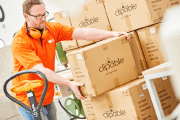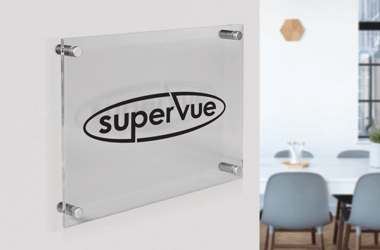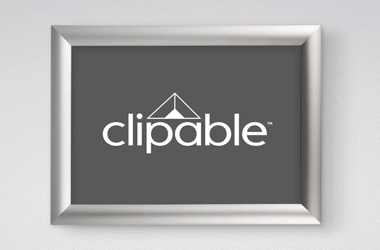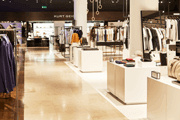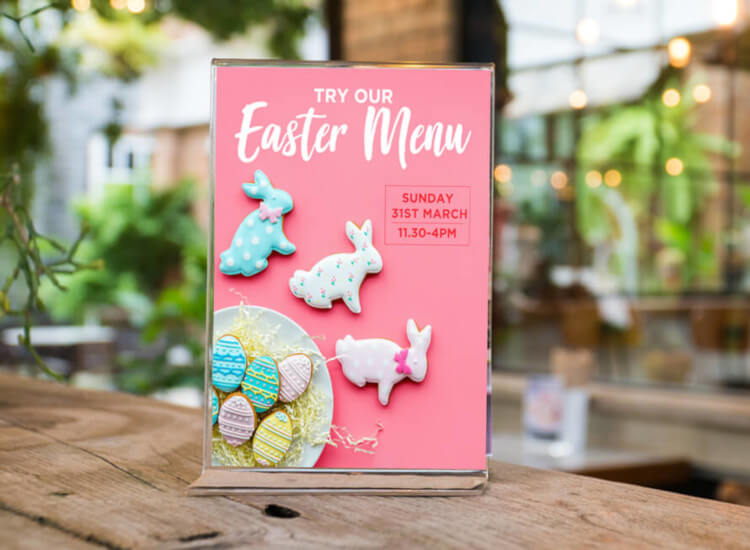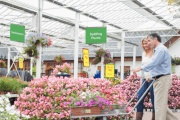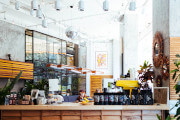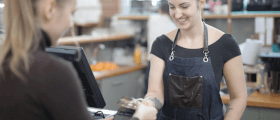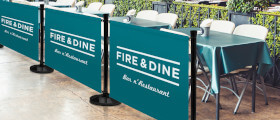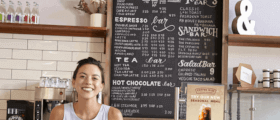Upselling And Cross-Selling Techniques In Retail

What is upselling and what is cross selling?
Cross-selling involves promoting different products from different categories at once.
This encourages customers to make additional, unplanned purchases. One example of cross-selling is encouraging customers to buy biscuits with their tea or coffee.
Upselling, on the other hand, is about encouraging customers to choose a higher-value product than they had originally planned.
An example of upselling is suggesting a higher-priced, luxury type of coffee rather than the store brand.
Cross-selling encourages impulse purchases, whereas upselling increases basket value. Both of these techniques increase average order value, while enhancing the customer experience. When using these techniques, aim to improve the shopping experience for your existing customers, rather than trying to attract new ones.
Academic research has shown that businesses can increase sales simply by cross-merchandising commonly-bought items with less-commonly-bought items to their current customers [1].
A recent 2021 study elaborated on this, being the first to demonstrate that, not only can the use of CPDs (complementary product displays) ‘increase sales of an associated focal product’, but also that the noticeability of these displays affects the scale of the impact [2].
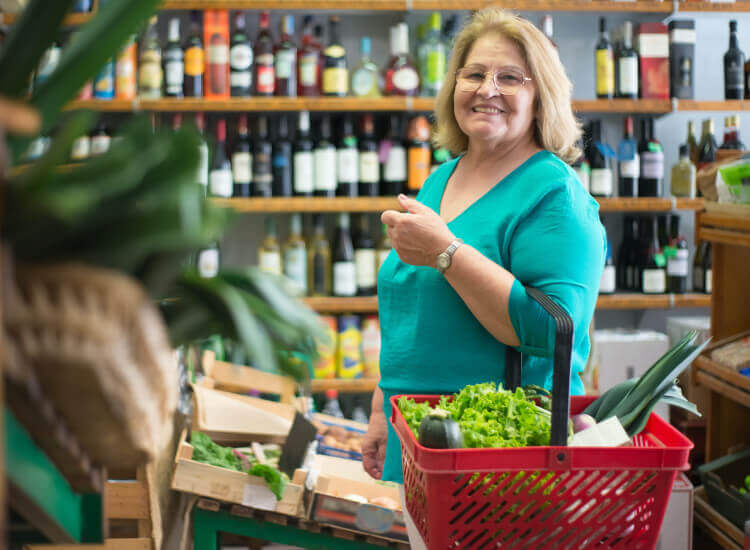
Experts in the field stress that that cross-selling is most effective when based on real customer needs [3]. Therefore, always consider what is convenient and appealing to your particular target market, rather than trying to push irrelevant products.
How to cross sell products in retail: 6 ways to cross-sell instore
1. Streamline the customer journey

Streamline the customer journey by merchandising essential items together, such as placing batteries or lightbulbs with electronics such as games and lamps. Use showcards and poster holders to remind your customers to grab everything they need.
2. Group complementary products
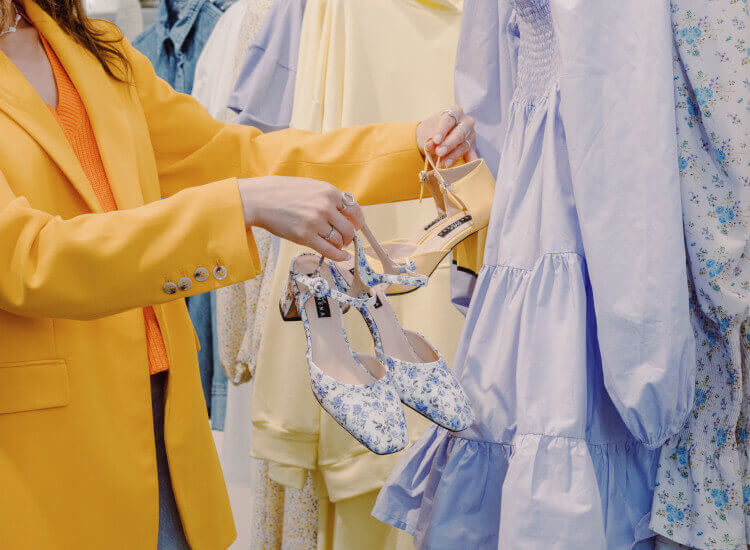
Merchandise complementary products together, such as a full outfit composed of individual items in fashion retail. Another example would be placing party items such as paper plates, disposable napkins and party hats, alongside cakes and cards.
3. Offer bundled products to increase AOV

Grouping essential or complementary products together in bundled deals can win you more customers based on convenience alone.
Adding a price discount to your bundles is even more effective, as it will appeal to bargain-hunters [4].
4. Provide customers with an experience
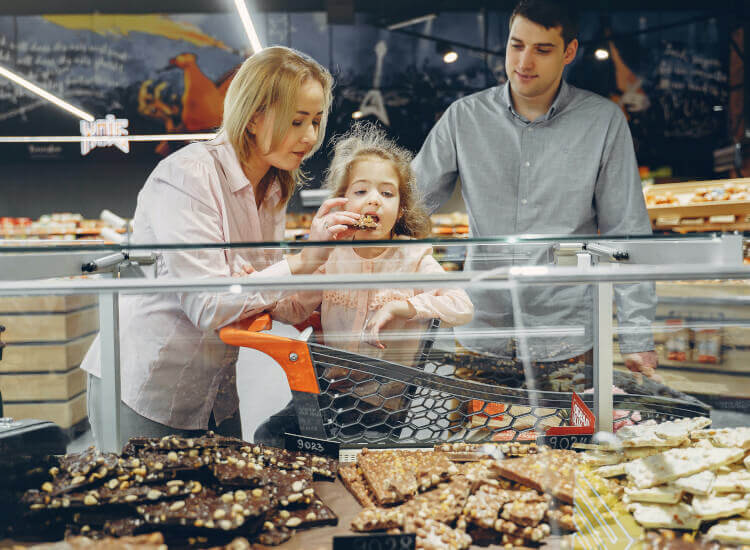
Why not hand out free samples of the complementary products so that customers can experience for themselves how well they work together? This technique works particularly well in food retail, such as pairing crackers with cheese or spreads and dips. Place staff members at aisle ends or on deli counters.
5. Implement discount thresholds
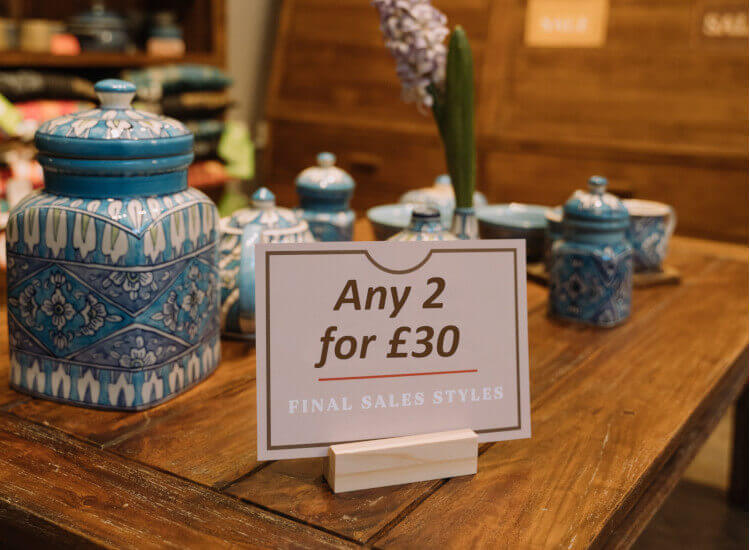
Having special offers with basket thresholds is a great way to encourage customers to spend more. For example, ‘spend over £20 and get a free gift’. This means that the customers who may previously only have spent £16 are now influenced to spend a further £4 so that they can enjoy the benefits of the free gift, too!
6. Offer additional services with products
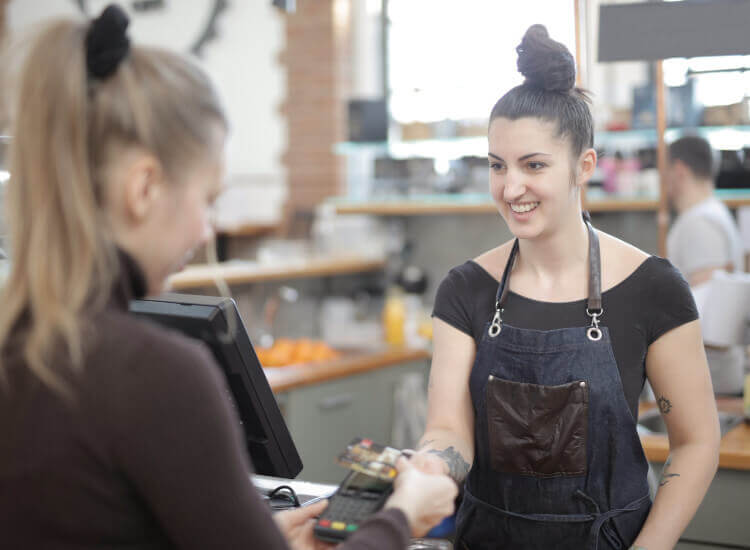
Your add-on sales don't have to be just physical products - offer your customers the option to add on complementary services, such as gift wrapping, home delivery, assembly, warranties and club memberships. Advertise these options on your overhead signs, banners and digital displays.
In order to implement effective displays for cross-selling, there are a range of display items that can help. The best point of sale displays for this allow you to display additional items next to a main focal item. Examples include clip strips for shelving, freestanding display units placed at your aisle ends, and dump bins for mid-aisle merchandising.
How to cross-sell products in fashion retail
-
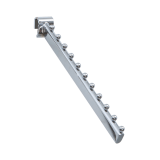
Sloping Waterfall Arm for Twin Slot
TSW In stock£4.21 ex. VATView -
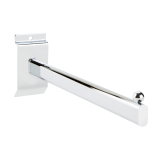
Hook Arm Rail for Slatwall
RHDA In stockFrom: £1.67 ex. VATView -
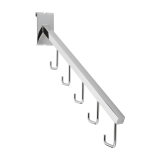
Gridwall Five Hook Waterfall Arm
GRDFH In stock£3.85 ex. VATView -
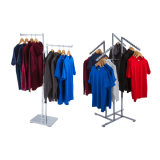
Clothes Rail Display Stand
AR4 In stockFrom: £59.15 ex. VATView
‘Placing products with their complements may expose consumers to more relevant categories and thus lead to more impulse and unplanned purchases’- Roggeveen et al (2019) [5].
Cross-selling techniques include displaying complementary products such as:
- Hair accessories with hair care products
- Batteries with electronic toys
- Belts and cufflinks alongside suits
- Sun hats by summer dresses and sandals
- Makeup brushes with cosmetics
- Garden furniture alongside barbecues or plants
- Wines near to steak and lamb
- Vegetable peelers alongside your potatoes and carrots
- Condiments next to your salad kits
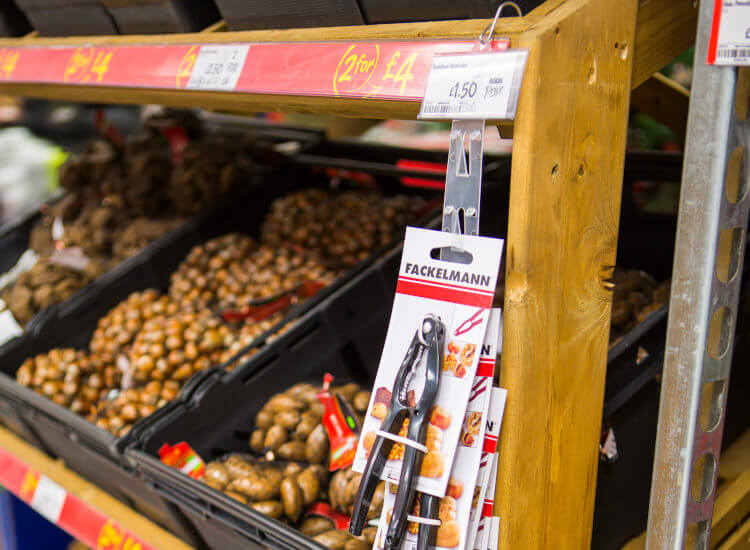
Upsell and cross-sell with shelf merchandising
-

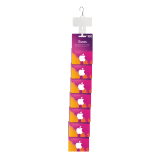
Plastic Clip Strips x 100
MS10 In stockFrom: £27.50 ex. VATView -
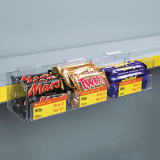
Clear Merchandising Tray
HTT In stockFrom: £18.80 ex. VATView -

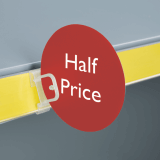
Data Strip Ticket Holders x 100
BS2 In stockFrom: £5.90 ex. VATView -
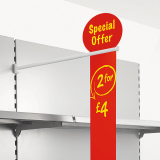
Aisle Fin Holder with Double Slot
AFS7 In stockFrom: £9.10 ex. VATView
Upselling techniques: how to upsell in retail
The best upselling technique historically seems to be the use of sales representatives to highlight the benefits of the more expensive option directly to the customers. In fact, one research review found that 88% of consumers place higher value in value staff members who suggest "alternative products and services that better meet their needs" [6].
In today's self-service, digital-first retail landscape, however, retailers can't rely solely on their staff members to convey upsell benefits. In the absence of additional staff, utilise your POS merchandising displays and sign holders to convey these benefits too.
A price-promotional sign might be used around cheaper products to highlight the value. Here, use your posters, tags and shelf signs to explain the advantages of choosing the more premium option.
You can even opt to use various digital signs to play your promotions in a loop. Use these to enhance key messages and upsell for you, reducing the need for additional staff members.
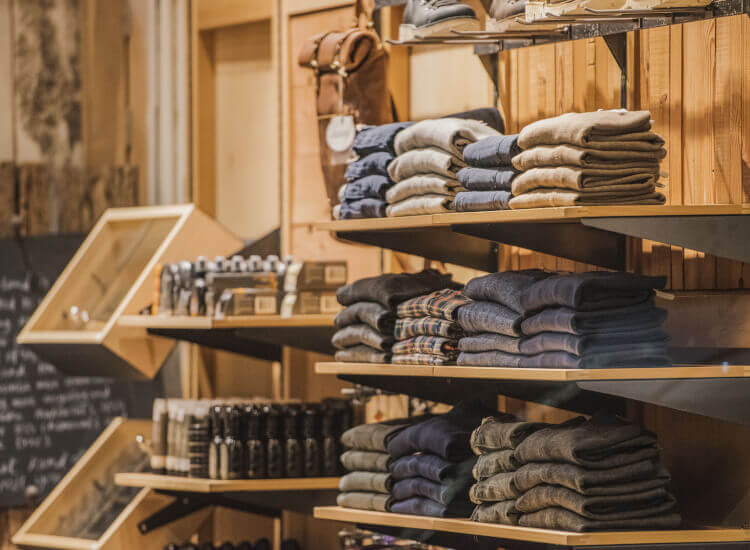
Additionally, the shelf height and location of your product arrangement could impact your customers' likelihood of choosing that product. Check out our guide to product placement to learn more about how to position your goods for the best results.
How to upsell with a ‘good, better, best’ marketing strategy
A key upselling technique is commonly known as ‘Good, Better Best’ product positioning. This involves presenting the customer with three similar items: the budget option of the item they're looking for (i.e. the baseline item), a mid-range alternative, and a “dream” version of the item that may be out of your customers’ budget. The objective is to get the customer to pick the highest-priced or the mid-range item.

This upselling technique also plays into the ‘rule of three’ from cognitive psychology. The rule of three suggests that people find things more pleasant or appealing when they are grouped in threes.
This applies to anything from a trio of products in a store, characters in a story, or courses in a meal. This consumer psychology secret is an incredibly quick and easy way to boost your upselling.
It's also worth noting that including the budget option could make shopping your range more accessible for low-income customers. This will improve your customer onboarding strategy. Meanwhile, presenting the ‘best’ version of your item alongside others can prompt aspirational and luxury shoppers to choose that option.
Supplies for upselling and cross selling in-store
-
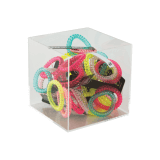
Five Sided Acrylic Display Cube
AQQ In stockFrom: £7.06 ex. VATView -
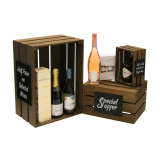
Wooden Display Crate
CRT In stockFrom: £7.85 ex. VATView -
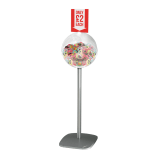
Freestanding Display Sphere
FDSPR In stockFrom: £43.81 ex. VATView -
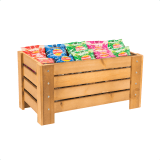
Wooden Crate Dump Bin
WCM In stockFrom: £89.00 ex. VATView
If you enjoyed this article, you may wish to check out our piece on visual merchandising strategies next.
Check out our Retail Hub for a curated selection of advice and display ideas!
References
1. Xavier Drèze and Stephen J Hoch, ‘Exploiting the installed base using cross-merchandising and category destination programs’ (1998), International Journal of Research in Marketing, Vol 15, Issue 5, pp. 459–471.
2. Anita Radon, Daniel C.Brannon, James Reardon, ‘Ketchup with your fries? Utilizing complementary product displays to transfer attention to a focal product’ (January 2021), Journal of Retailing and Consumer Services, Volume 58.
3. Frank K. Sonnenberg ‘The Power of Cross-Selling’, The Journal of Business Strategy; Cambridge Vol. 9, Issue 1, (Jan 1, 1988): 56.
4. Li, Yada and Zennyo, ‘Duration of price promotion and product profit: An in-depth study based on point-of-sale data’, Journal of Retailing and Consumer Services (January 2021), Volume 58.
5. Anne L. Roggeveen, Panagiotis Sarantopoulos, Aristeidis Theotokis, and Katerina Pramatari, ‘The Impact of a Complement-Based Assortment Organization on Purchases’, Journal of Marketing Research (2019), Vol. 56 (3) 459-478.
6. Wagner A Kamakura, ‘Cross-Selling: Offering the Right Product to the Right Customer at the Right Time’, Journal of Relationship Marketing (2008) 6 (3-4):41-58.





